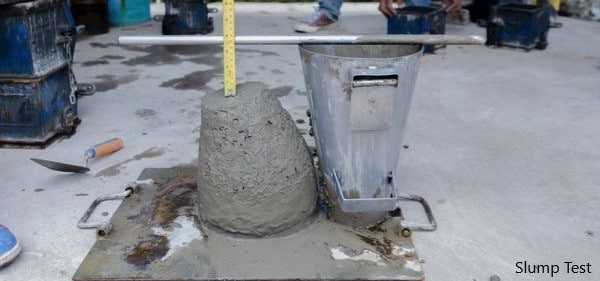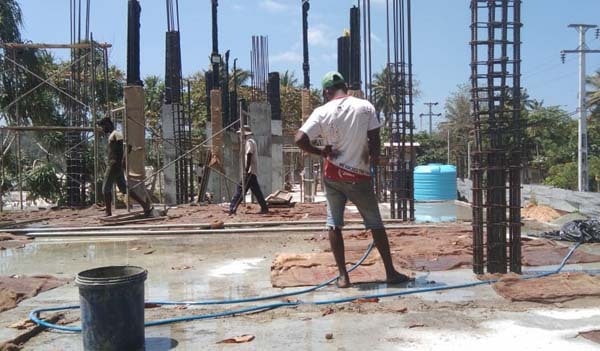Concrete mix for footings depends on the type of the footing, nature of the ground, applied loads, durability issues, etc. There are many to consider when deciding what concrete mix for footings.
Selection of the best concrete mix for footings will be done based on the design code requirements and judgements made as per the experience of the technical personnel.
How to make concrete for footing foundations
Mainly two types of concrete can be used for the footing construction depending nature of the construction.
Ready-mix concrete could be used in major construction work and manual mixing of concrete at the site could be done for small-scale projects such as house construction, small-scale buildings or any other smaller structures.
Factors to be Considered When Selecting Best Mix for Footings
Selection of the concrete grade or concrete mix for footings to do with much care by considering the following factors as the concrete mix is the main factor that affects the durability of concrete.
- Loads applied on the Footing
There is a relationship between the structural capacity and the grade of the concrete. Concrete is strong in compression and weak in tension. In a section, both the tension and compress stresses can be observed. Therefore, we have a higher grade of concrete when there are higher loads applied on the footings.
Accordingly, the concrete mix for foundation footings shall be selected based on the structural design requirements.
- Ground Conditions and Exposure Class
The concrete mix for footing needs to be decided in a way that it can stand for the aggressive environment or if the footing is constructed in such an environment.
Exposure class shall be locked into when the concrete mix for footings is decided. Therefore, a concrete grade which is based on the mixed proportions of cement, water and aggregate shall be decided as per the ground conditions.
- Ground Water
Groundwater could contain harmful chemicals such as chlorides, sulfates, etc. that affect the durability of concrete. Concrete mix having higher grand and has resistance to these chemicals shall be selected.
In this kind of environment, ready mix concrete for footings is the best option than another type of concrete and it shall be selected with much attention.
- Durability of Concrete
A durable concrete mix shall be selected. It should be able the retain the condition of concrete without deteriorating in a way that affects the structural element capacity.
- Shrinkage of Concrete
Concrete should have low shrinkage. Though we can not avoid the shrinkage of the normal concrete, the lesser the shrinkage better the performance of the concrete.
Further, attention shall be made to the shrinkage cracking when finalizing the concrete mix for the footings.
- Workability of Concrete and Why Important
Footings do not have much reinforcement congestion. However, when there are two nets with closely-spaced reinforcements, we may need workable concrete to pour.
Further, having workable concrete is easy to compact.
- Slump of Concrete
The slump of the concrete is the indicator of its workability of the concrete. Therefore, the adequate slump could be maintained and concrete mix ratios shall be accordingly.

Concrete Mix for Footings
Let’s discuss what is the mix ratio for foundation concrete. It depends on the factors discussed above.
In general, the minimum structural grade of concrete is grade 25 (C25). The mix proportion of the grade 25 concrete is 1:1.5:3 (cement: sand: coarse aggregate).
The article Concrete Mixing could be referred to for further information on a concrete mix for footings.
Depending nature of the structure and exposure classes, concrete grades high as C40 could also be used for foundation construction.
What is the Minimum Grade of Concrete for Foundations
This is a big question to be asked.
As concrete grade depends on many factors.
In general, the minimum grade of concrete we used as structural concrete is grade 25 concrete. Sometimes this is considered grade 30 concrete also.
Further, it should be noted that the cement mix for footings is the key factor that controls the key properties of concrete.
How to Control Cracking of Foundation Concrete
Footings are subjected to tension when very high loads are applied. The bottom surface of the footing is in tension.
If there are cracks in the concrete, it could further develop creating durability issues.
Further, there will not be a top reinforcement net for footings generally. When the higher grade of concrete is used and has a high thickness such as 500mm, there are possibilities for thermal cracks. Attention shall be made to this and when required, top reinforcement could be provided to control the cracking of concrete.
Special attention shall be made to the curing of concrete also. Curing improves the durability and it could reduce the cracking of concrete if done correctly.
Therefore, special attention shall be made when a concrete mixture for footings is selected.

Related Articles
- Mas Concrete
- Roller Compacted Concrete
- Self-Compacting Concrete
- Concrete
- All about Concrete
- Concrete Construction
- Reinforced Concrete
- Ready Mix Concrete
- Advantages and Disadvantages of Reinforced Concrete
- How to Select Concrete Grade
- Properties of Concrete
- Admixture Testing
- Early Thermal Cracking [calculate R/F requirements]
- Effect of Construction Practices on Cracking
- Cracking of Concrete [ basics, types and causes]
- Physical Reasons for Cracking
- Fundamental of Cracking of Immature Concrete
- Foundation Cracks types why they serious
- Cracks in Basement Wall [a detailed study]
- What is Spalling of Concrete – causes and repair
- 20 Factors Affecting Durability of Concrete
- Durability of Concrete [Requirements and Problems]
- Vibration of Concrete [methods and correct procedure]
- 6 Factors Affecting Curing Time of Concrete
- 11 Methods for Curing Concrete
- A Detailed Study on Concrete[from scratch]
- Types of Shrinkage in Concrete [detailed study]
- Combined Footing
- Spread Footing
- Shallow Foundations
- Pier Foundation
- Footing Foundations
- Deep Foundations
- Foundation Failure
- Underpinning
- Eccentrically Loaded Foundations
- Shallow Foundation Failure
- Pile Raft Foundations
- Mat Foundation
- Pile Foundation
- Driven Pile Foundations
- Pile foundations
- Uplift Pressure on Foundations
- How to Determine Foundation Type
- Excavation for Foundation
- Foundation Waterproofing
- Settlement of Shallow Foundations
- Slab Foundations


